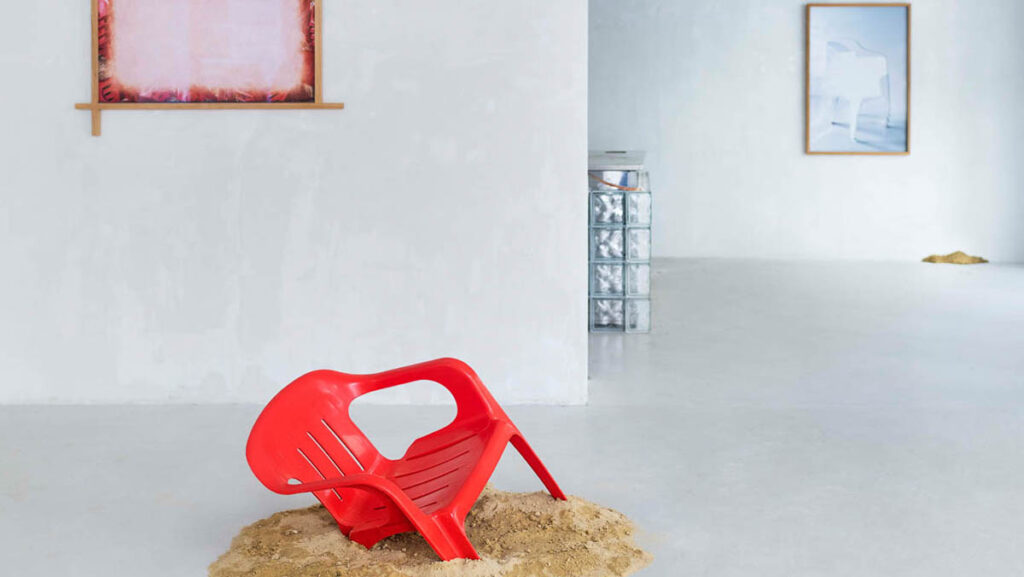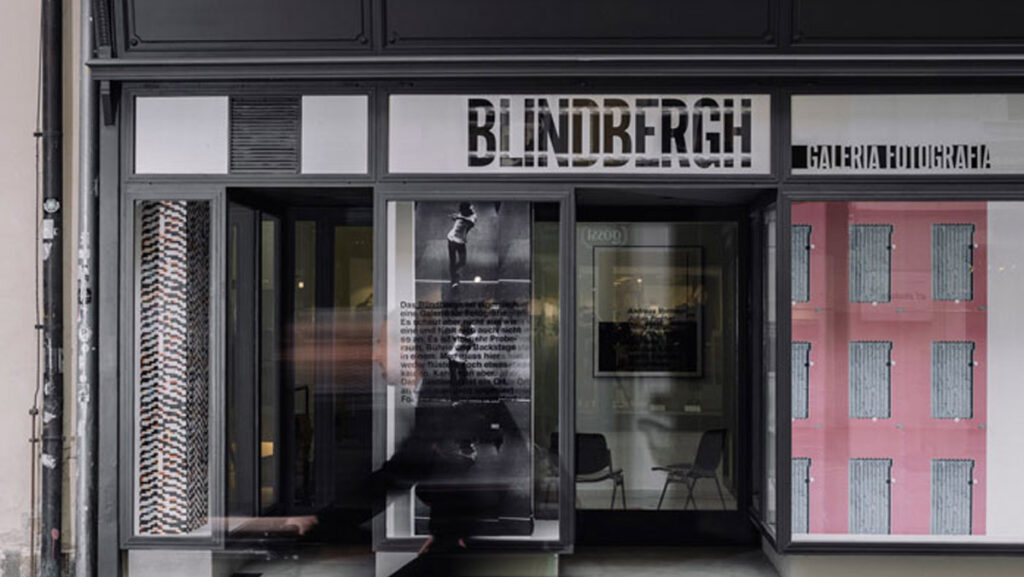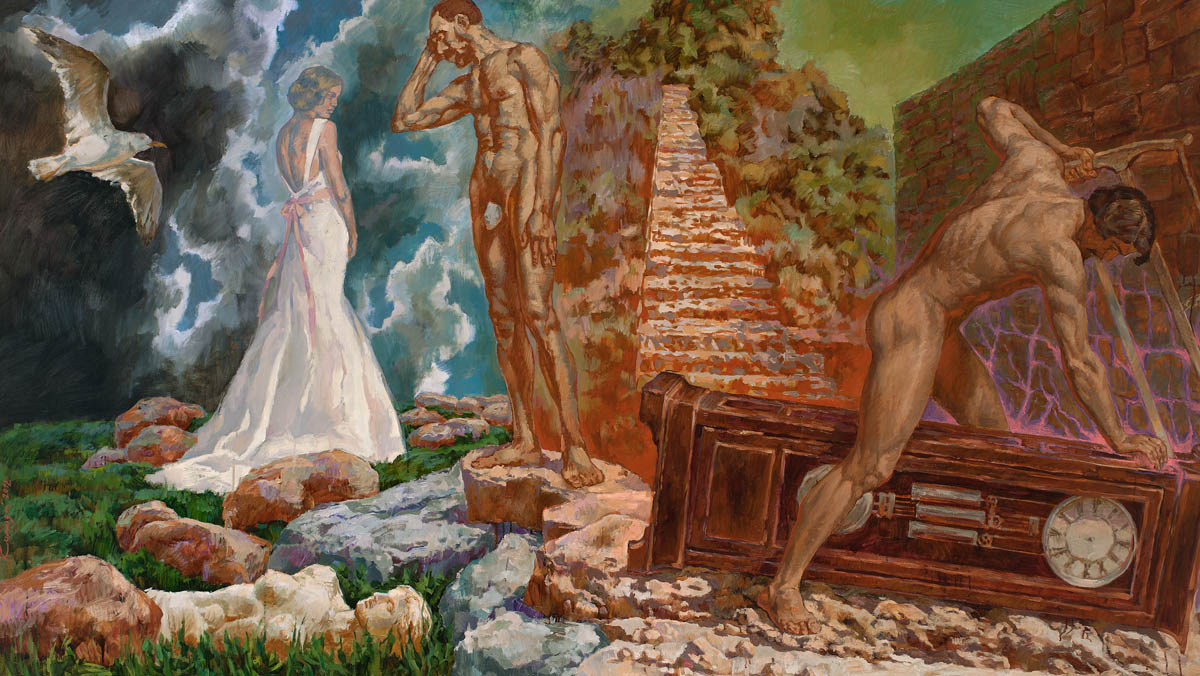
What does art mean to you?
As time has shown, art is the only asset or even wealth possessed by me. In the course of my life, I lost everything and had to start from scratch many times. I left my home, lost my property and savings, and parted ways with my friends and with my loved ones. And art is the only thing that has stayed with me. Having said that, I mean not just the process and some results of my creative activity, but art as a whole and part of the culture.
For me, like many other people, art is one of the spheres where human aesthetic potential gets realized. In terms of physiological processes like eating, sleeping, having sex, and so on, we have not gone too far away from other living creatures inhabiting our planet. This kind of spiritual and intellectual activity has a wide palette of options and possibilities, and it does not really matter whether you are a donor or an acceptor. An artist and a spectator, once they find themselves in the energetic field of art, experience sensations of the same nature, and feel the same waves of harmonic oscillations. And those who are luckier can experience catharsis. The only difference between the artist and the spectator lies in the fact that the former manages to get hold of some of these subconscious vibrations and get them materialized in the form of an artistic statement.
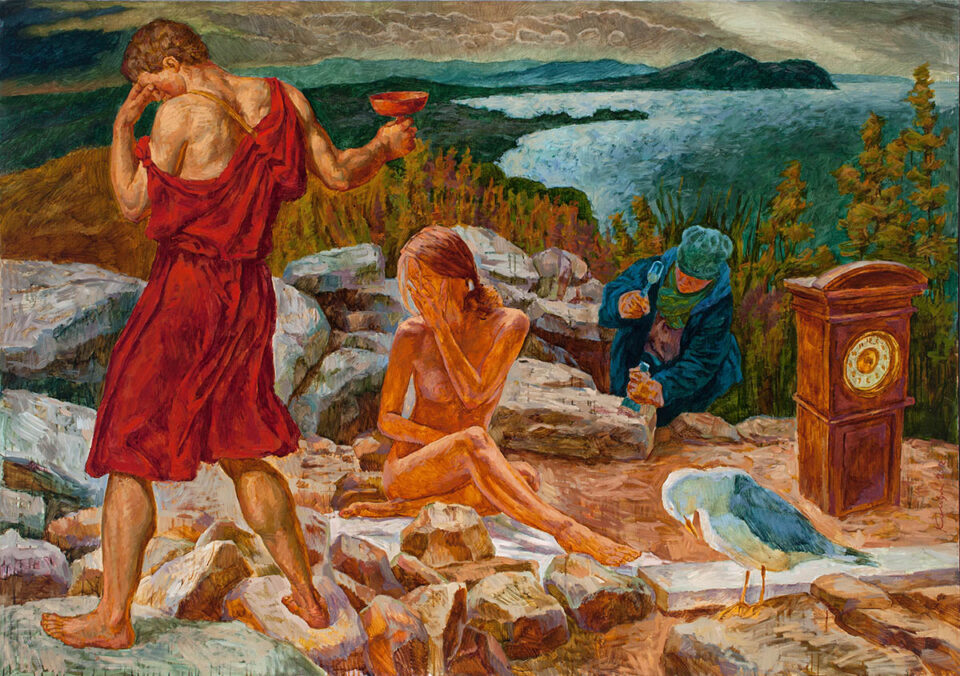
And there is, perhaps. one more difference. Franz Kline formulated it as follows: “If someone was born to be an artist, this is a sentence which cannot be appealed. A person can run away, go in hiding, pretending to be a broker or oven have his both hands amputated – nothing will help. Fate is merciless, it is best not to argue with it.”
I started to draw before I learned to walk and talk. However, I never thought I would become an artist. I had a dream to become an astronaut and an astrobiologist. But my parents were against it. They considered this profession too dangerous. The commander of the team of astronauts also objected to my joining their ranks. When I realized that the road to the stars was closed for me, I started looking for other ways to overcome the earth’s gravity. I took another road which led me to art. And since the search and study of intelligent alien life on planets around Tau Ceti is out of my reach, I have no other choice but to immerse myself in the complex and mysterious world of earthlings. But this is a subject for a separate conversation with my mother or correspondence with Elon Musk.
What inspires you?
I don’t have tried and tested sources of permanent inspiration. I am indifferent to drugs and cannot meditate. I don’t succeed in summoning spirits or establishing communication with aliens. I don’t like situations that provoke a surge of adrenalin or generate excessive levels of testosterone. I always look for shortcuts to dopamine. In short, I am a mentally healthy person which, as a matter of facts, often harms the image of an artist, as he does not live up to the stereotypes formed over the last hundred years.
I think throughout my whole life I have been inspired by life itself. It has many forms and is full of unpredictability. The life around me is an ever-working generator of ideas. Although sometimes life imitates art. That’s why any accidental event, any inconsiderable happening, or a fleeting moment can be a starting point for the flight of imagination. As the poetess Anna Akhmatova said: «If only you knew from what rubbish Poetry grows, knowing no shame.”
Naturally, I am also inspired by other authors including both the classic artists of the past and my contemporaries. And this does not cover only visual or fine arts, but also music, literature, and cinema. Sometimes just one drawing by some artist would give me a whole series of ideas not connected in any way with the original work. When I listen to music in my headphones or in a concert hall sometimes visual images come to me out of nowhere. But this doesn’t apply to opera. In opera, I fall asleep.
In rare instances loving a woman can be a source of creative inspiration. However, as a rule, such love is inclined to cannibalism – it devours everything it gave birth to. Everything inspired by love either burns in the fire of the heart suffering or is wasted in the hustle and bustle of petty feelings. Either I have not been lucky, or I have looked in the wrong direction. For example, I’ve not tried to fall in love with a man, as I am confident it will be the same or even worse an experience. But this is a separate subject to be discussed with a psychologist or with a Men’s Health interviewer.
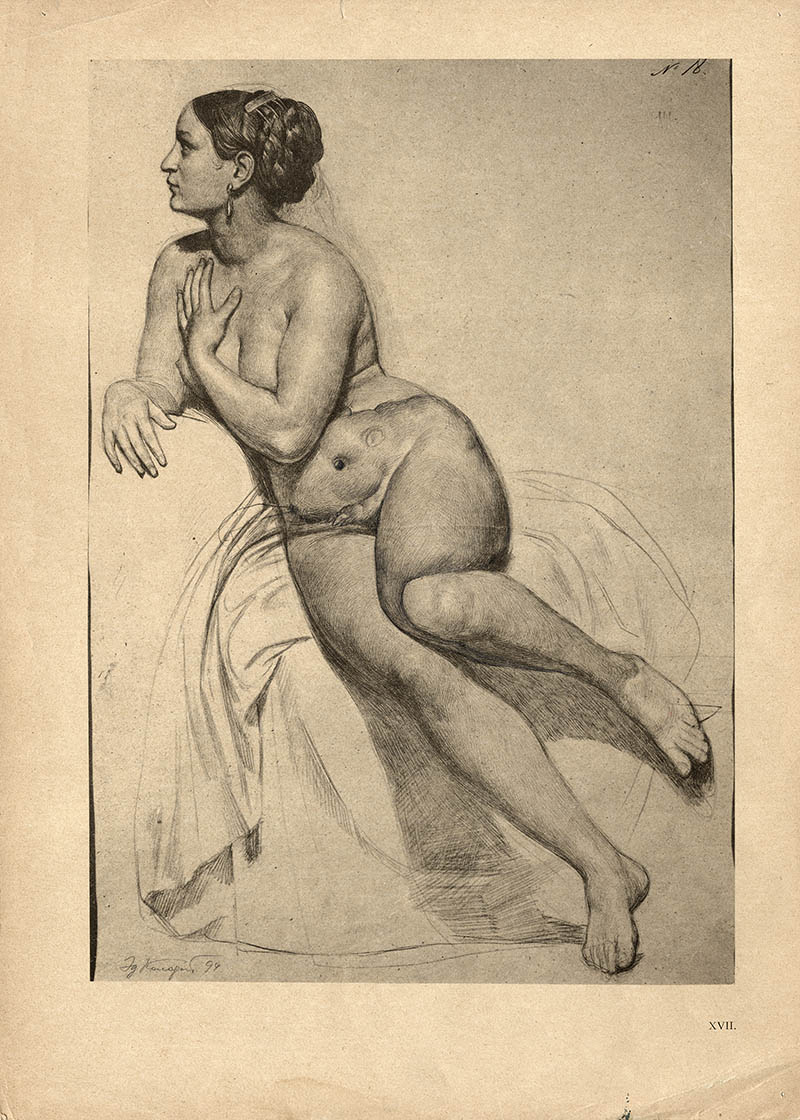
Works from the series „Anatomy for artists. Volume 1.“ All pages 30,5×42 cm, mixed technique 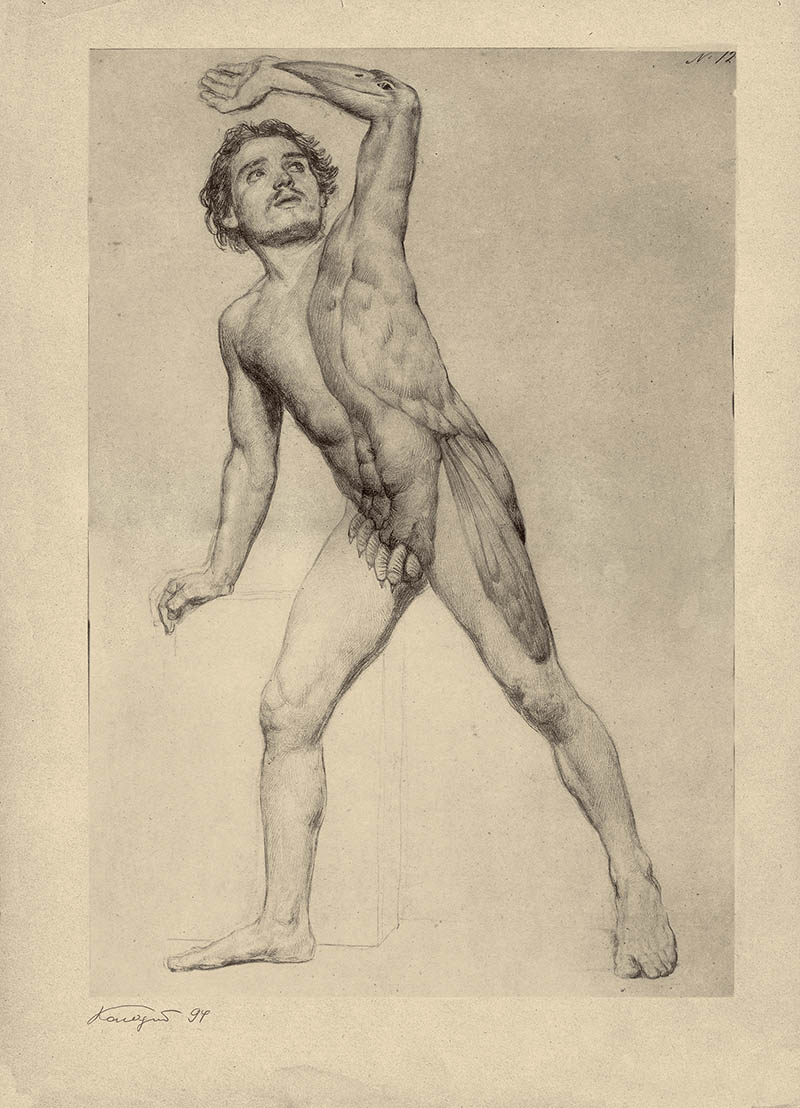
Works from the series „Anatomy for artists. Volume 1.“ All pages 30,5×42 cm, mixed technique
How would you describe your artistic style?
I think in my instance it is more appropriate to speak about methods and tools. It is common knowledge that these are the two most popular ways how artists approach their work. In the first case, an idea dictates the use of some definite material. In the second case, the material itself gives an idea to an artist. For me, the first option works out more often. An idea comes to me, and I start thinking about which format is required for its implementation: a painting, a comic strip, a sculpture, a video, a text, and so on. Quite often, to make a new artistic statement (this is especially true for statements requiring allusions and quotations), I am forced to change the style which took shape in the previous phase of work. In art, I try not to limit myself to anything. And if my idea demands using the idea of someone else, I follow the principle worded by the Nobel laureate T. S. Eliot: «Immature poets imitate; mature poets steal»:
If we talk about my paintings and graphic work made over the last few years, the main method, as well as the technique I have used, is collage. For example, one cannot see different elements pasted on the canvases of the “Travelling plots” series. But the composition of each of the paintings is created according to the principles of collage.
You may think I’ve decided to evade your question. Certainly not! Moreover, the ready answer already exists. I have often been asked about my style by spectators. And the gallerist I have worked with has been asked the same question by collectors. That’s why at some moment I’ve decided to define some of the latest series of my work as “weird realism”. The elements of traditional academism, classic realism and surrealism are blended into this style.
In my opinion, there are two types of artists: paranoids and schizophrenics. The former ones concentrate on very narrow tasks. For years they cultivate one and the same patch of land never going beyond its borders. They keep polishing their craftsmanship and perfecting the same methods. The latter artists, in the course of their lives, give up their findings and start from scratch more than once. They travel around the world of art sometimes changing their themes, language, and style beyond recognition.
I rather belong to the second type. In my opinion, any artist must experiment all the time, this way extending his creative career and his life in art. The author who once found an interesting technique and has been replicating it for decades stops being interesting. I don’t want to be a slave or hostage to something called “my own style”. However, this is a subject for a separate conversation with Biennale di Venezia curators or my personal stylist.
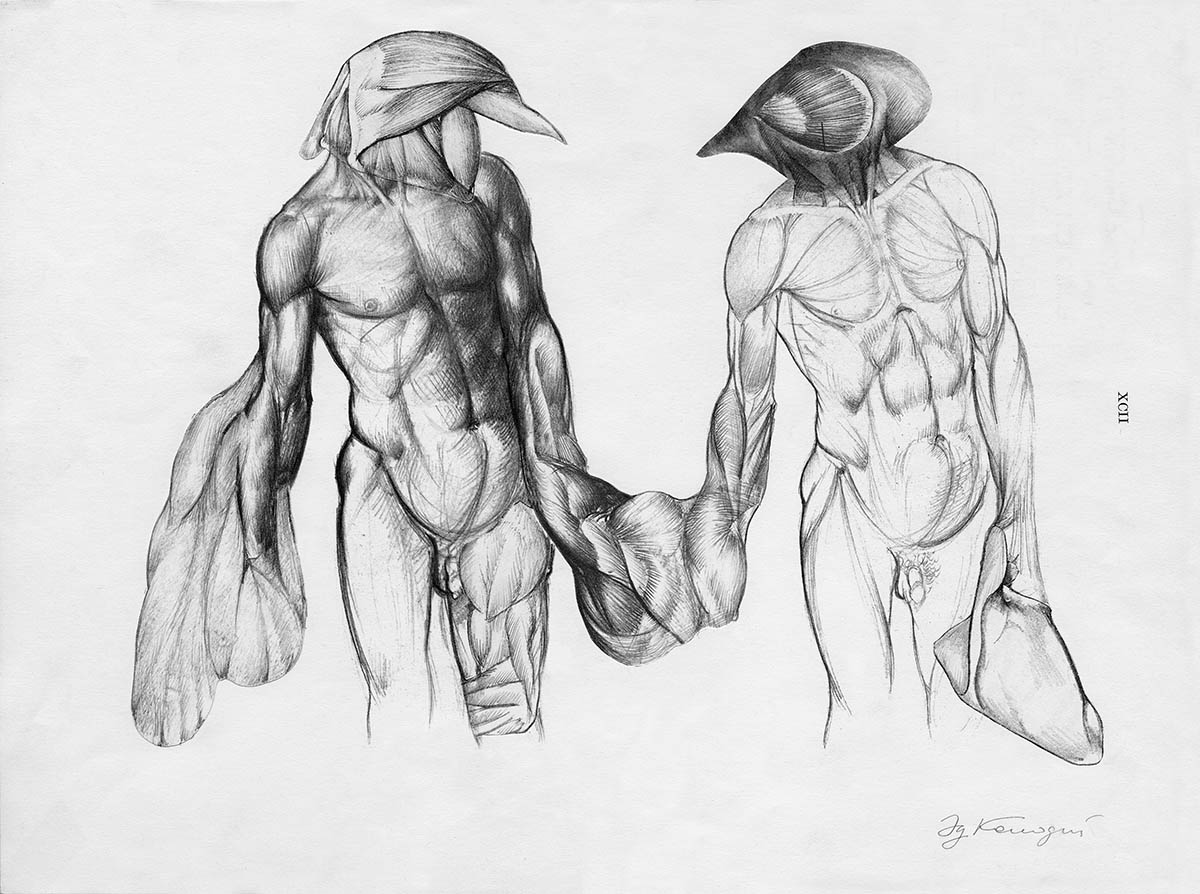
Works from the series „Anatomy for artists. Volume 2.“ All pages 24×32 cm, mixed technique 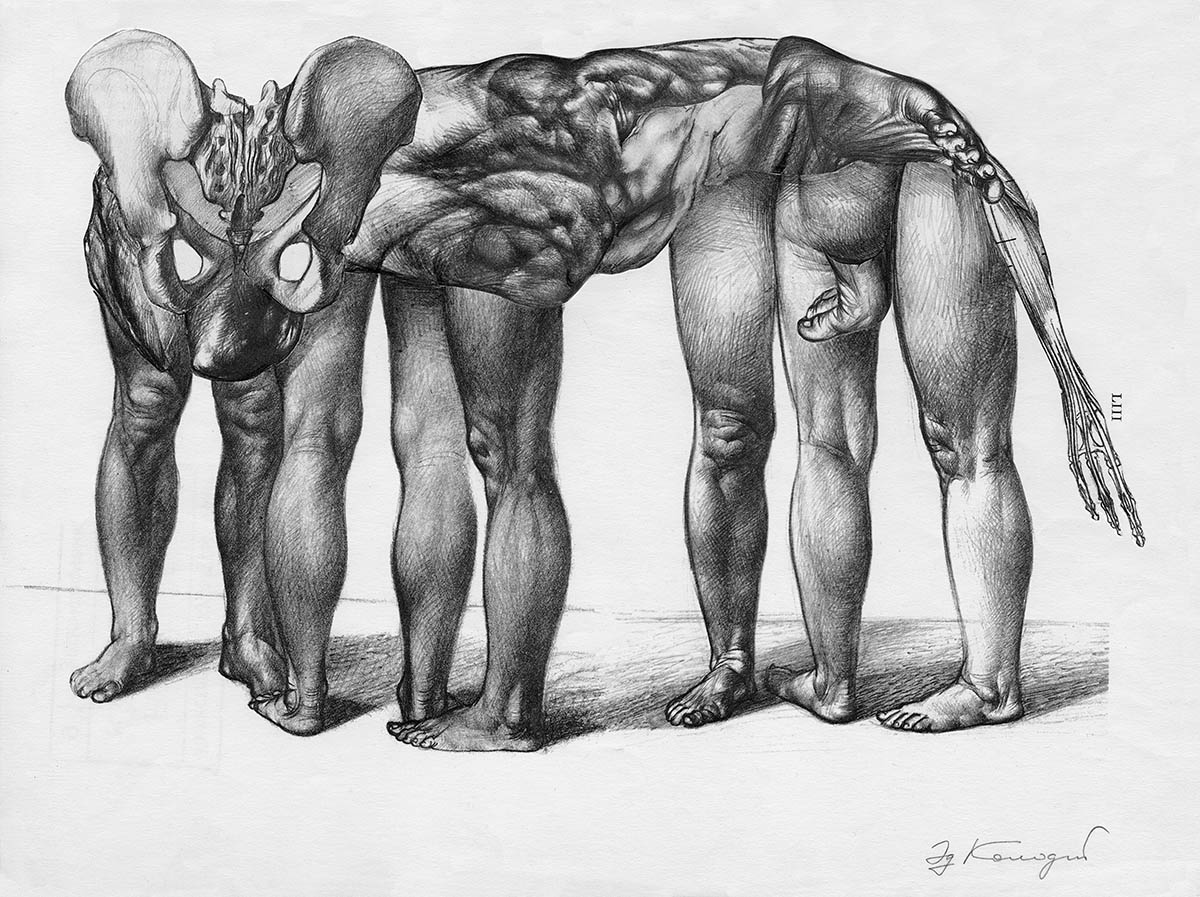
Works from the series „Anatomy for artists. Volume 2.“ All pages 24×32 cm, mixed technique
What themes or ideas do you explore in your artwork?
My themes and ideas are connected with a human being in one way or another. In a broad sense, there is a connection with mankind. Art and science have been studying Homo sapiens for a few centuries, and there are still more questions than answers. Apparently, this study will go on forever. As Stanislaw Jerzy Lec once said: “God is curious himself to see how all this is going to end.”
I am attracted to everything which has to do with the inner world of people: a mysterious nature of feelings and bizarre games of the mind, the divine beginning, and vile undercurrents. In a certain sense, I am interested in anatomy. Of course, my interest is not so deep as that of Leonardo da Vinci, I’ve never secretly dissected corpses, although I’ve once visited the anatomical pathology museum at a medical university. Some physical aspects like pain, aging, and death also draw my attention in their own way.
However, all this interests me not as a collection of phenomena, but as an interaction of ingredients in a giant soup called human existence. And the boiling points in this never-ending brewing that are of utmost interest for artistic analysis and rethinking are conflict situations. These include both inner conflicts of a person, and tragic confrontations between nations, social collisions, and domestic drama.
Speaking metaphorically, I’ve been walking the road of life and searching for a human being like Diogenes of Sinope. Instead of a lit lamp, I possess an invisible optical instrument that was given to me as a present at my birth. However, this is a separate subject either for a philosophical thesis or for my epitaph.
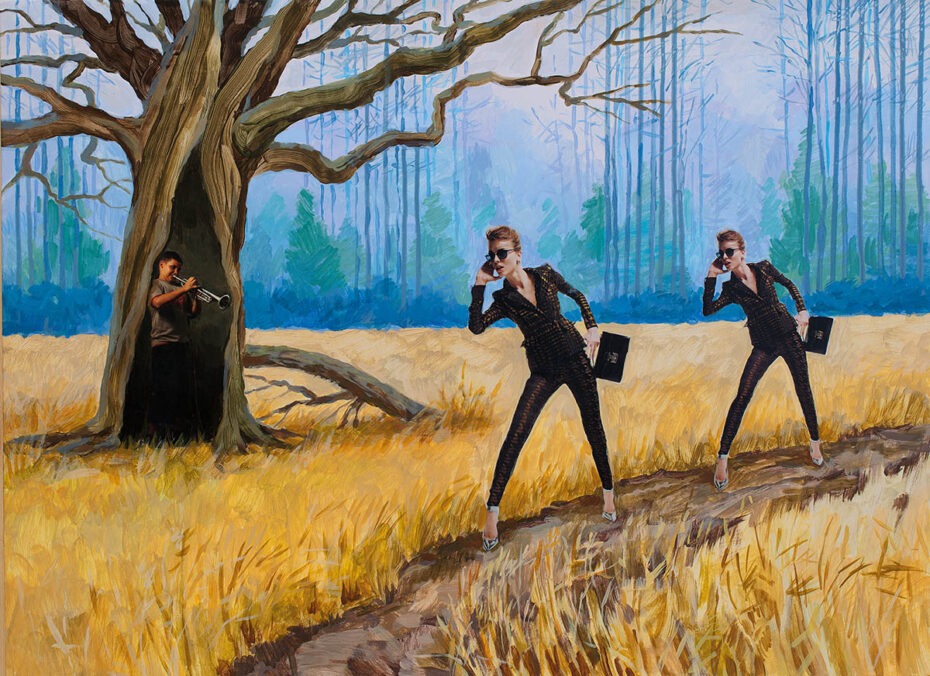
In how many moments throughout the day do you find yourself reflecting on your life in Odessa?
In my life two cities have become home to me – these are Mariupol and Odessa. Almost all important events of my life have taken place in these cities – my childhood, school years, youth, first steps in art, first love, studies in the art college, first personal exhibition, the birth of my child, and many other things. Now that the war rages in Ukraine, I really think about both cities every day. And I try to follow from afar whatever is happening there.
Mark Shagal was once asked if there was any place on Earth where he felt most at home. And his answer was as follows: “The whole world and one small street in Vitebsk”. I can answer the question in the same way, but for me until recently such a place has been not Vitebsk, but Mariupol and Odessa.
This place in Mariupol does not exist anymore. It has literally disappeared. My house is destroyed, its foundation is the only thing that is left. The building was set ablaze by shells, and the fire reduced to ashes the drawings made by me as a child and as a student, paintings from my first personal exhibition, and a few recent pieces of work. The family archive with photographs and letters as well as the home library – a small one but dear to my heart – also burnt down. Not only my house disappeared. The whole district of Mariupol connected to my life was totally destroyed – the school where I studied; the stadium where I had sports practice and participated in competitions; the palace of culture housing the children’s art school attended by myself…
And the city itself has been occupied and made a part of the Russian Federation forcibly. No one can say how long this catastrophe is to last. I cannot yet come to terms with the thought that I have nothing left from my birthplace but my own memories which are fading slowly. Sometimes it seems to me I will never come back to Mariupol again. Even after our army frees it, the city becomes Ukrainian again. And I don’t want to say more, because all this pain is a catalyst for my anxiety, a cause for frequent insomnia, and a separate subject to be discussed with a cardiologist.
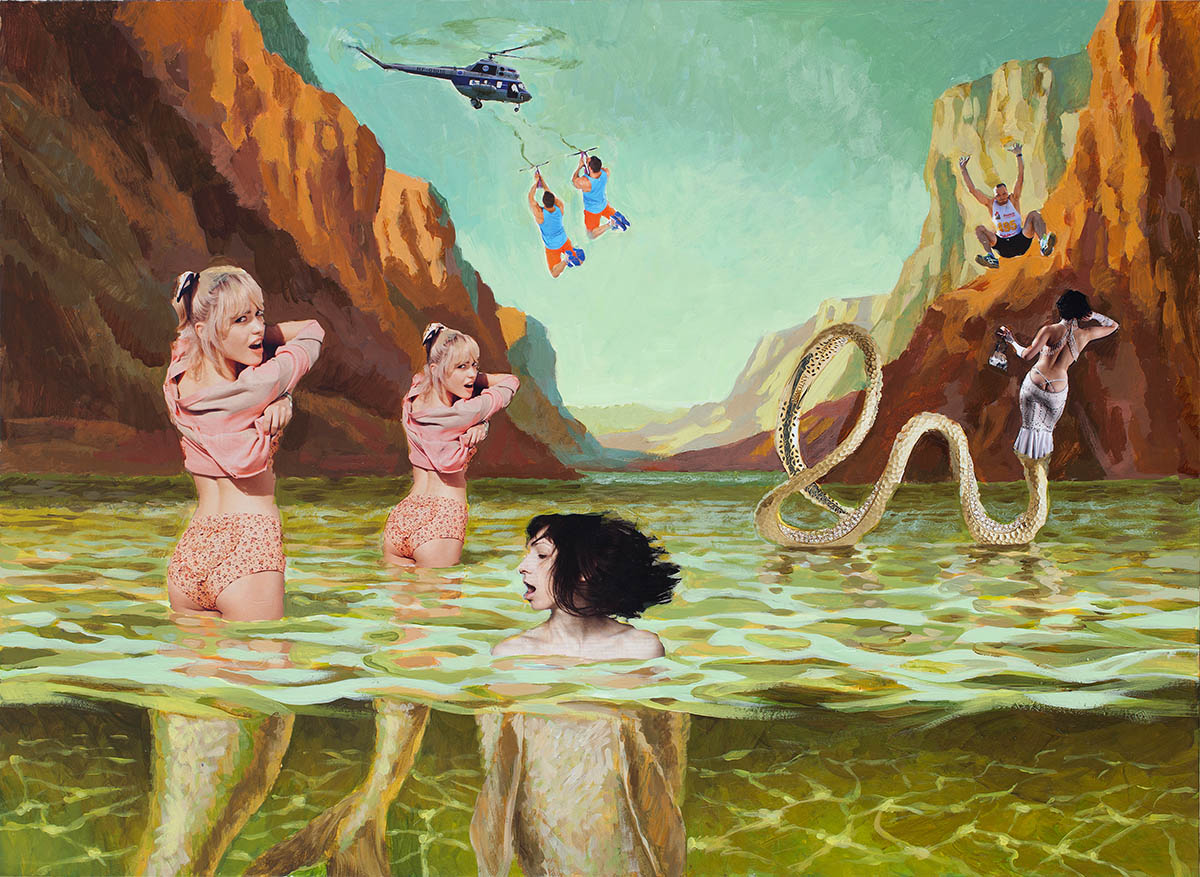
How do you stay motivated and inspired to create new art now?
Yes, recently this has become much more difficult. The start of the war was a shock to me as well as to many of my compatriots. For a few months, I lived in a state of “numbness”. As if I was stunned or shell-shocked. It is a very burdensome state when you are trying to look for some answers, but you feel emptiness and darkness inside of you.
There was a moment when everything I was doing seemed senseless and paltry to me. Like what Theodor W. Adorno said: “Auschwitz irrefutably demonstrated the failure of culture”. And history is repeating itself now. The only difference is that instead of this notorious camp, we hear the names of the Ukrainian cities. And now the well-known quote by this philosopher could be rephrased as follows: “After Mariupol and Bucha, no word intoned from on high, has any right in its original form.”
Nonetheless, I’ve started to be able to summon my inner force and motivation to create new work, especially since I came to Vienna. The internal fog is dissipating. Apathy and indifference have been reduced to nothing. I feel again the urge to express myself. However, this is a separate subject for a dialogue with myself and a segue into the next question of whether anything has changed in my art.
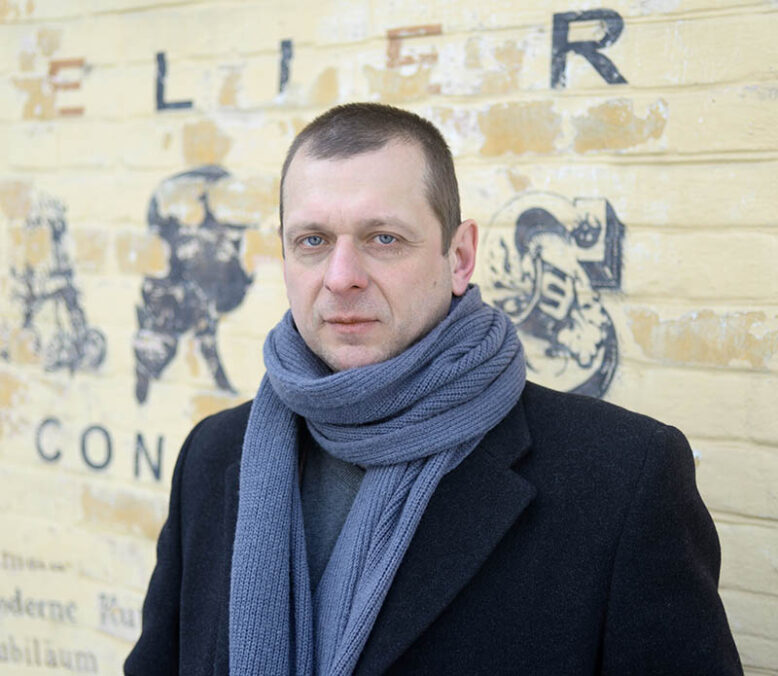
How has your art changed over time?
Changes are taking place right now. I think the language of my art is changing. I’ve planned for and am already creating the work which differs from that made over the last years. I’ve felt that my optics are being transformed, I now see things differently. Images which have recently been coming to me are different from those which came before. Besides, a lot of my methods and tools are not applicable anymore. They do not work. As one conceptual artist and a friend of mine said: “to weave a discourse you have to have a flexible context”.
Unfortunately, I don’t yet have a studio in Vienna, that’s why I am now working on small graphic pieces as well as drawings and sketches. However, I hope in the near future I will have a chance to create a series of paintings. And if this works out, it will be a separate subject for a personal exhibition.
What do you wish for the future?
It’s always difficult to answer this question. There is a saying: “If you want to make God laugh, tell him about your plans.”
Nonetheless, in the nearest future I, like all the Ukrainians as well as a huge number of civilized people from other countries, hope to see a victory by our army and the start of the peaceful reconstruction of the country. And from myself in the nearest future, I expect accomplished work and new ideas.
But this, I hope, will be a different subject for our next interview.
Ed Kolodiy – www.kolodiy.art




